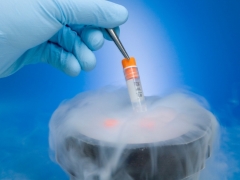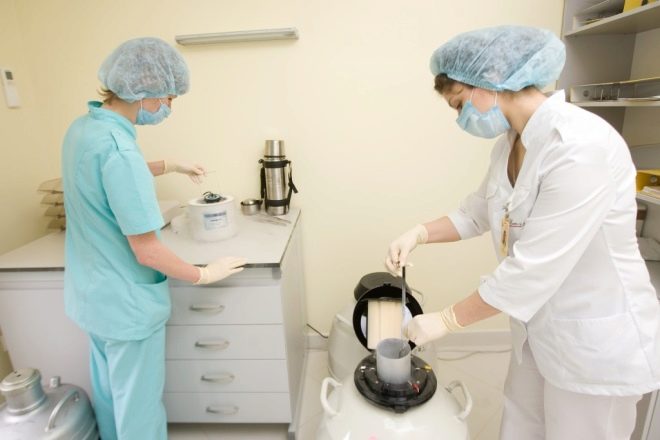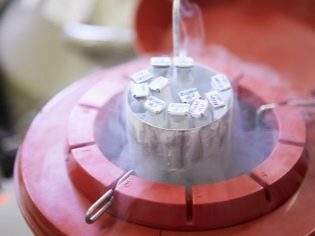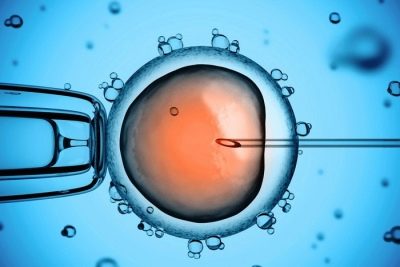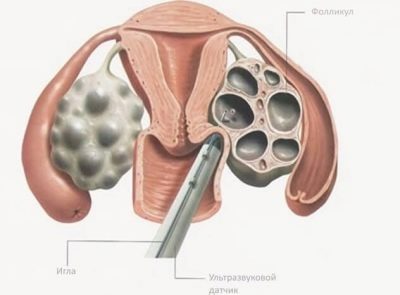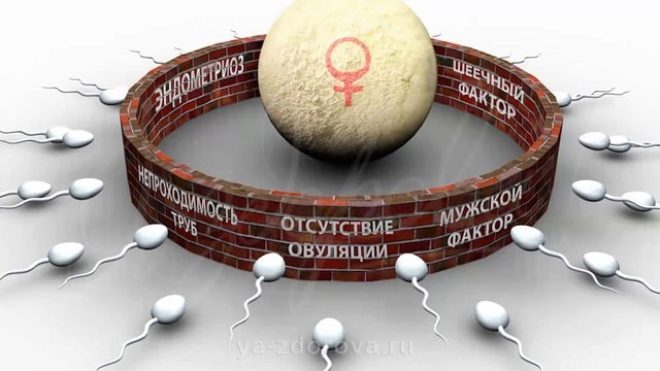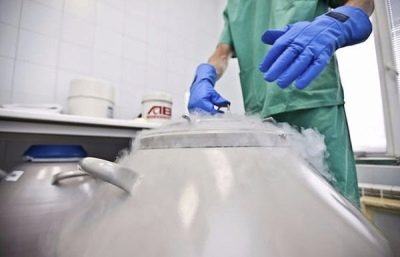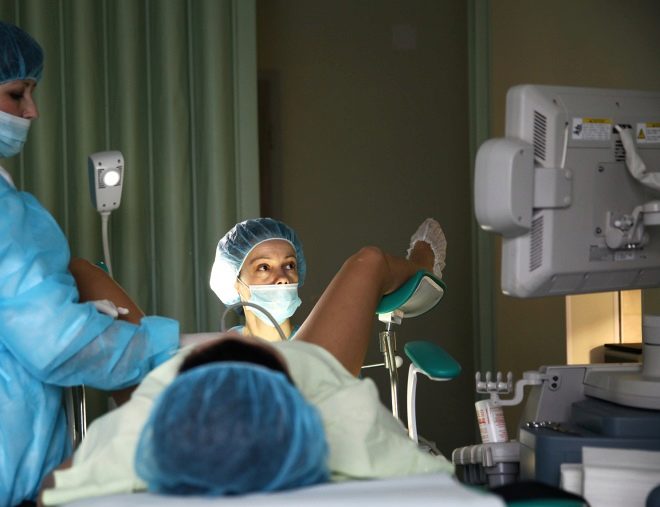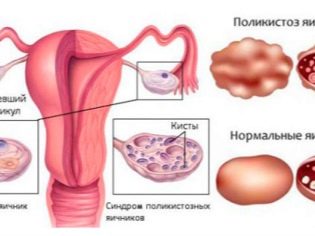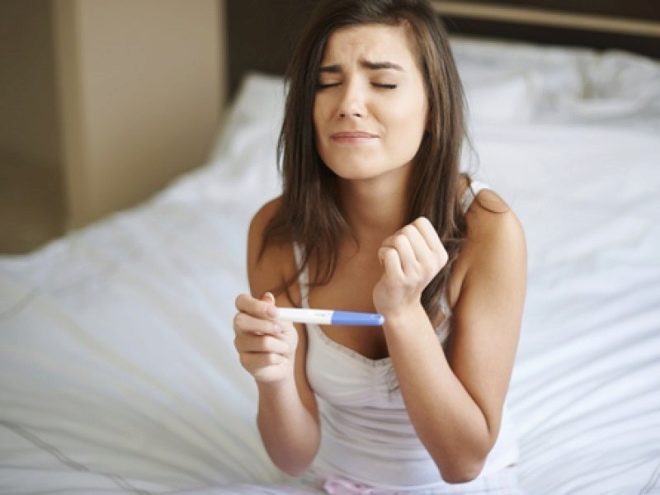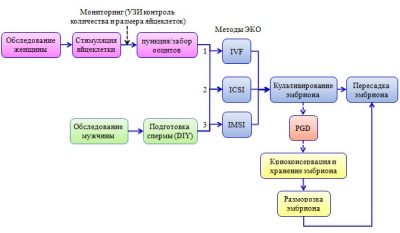What method of freezing eggs better to choose and how is the process?
In the daily bustle, in pursuit of a good education, brilliant career, financial solvency, many women forget that their reproductive capacity is limited. The number of eggs with which a girl is born decreases every month. And with it, the chances of motherhood are also decreasing. One of the ways to prolong your “female” time is egg cryopreservation. About what methods of oocyte freezing exist, what are their advantages and disadvantages and how to choose, we will tell in this material.
What it is?
Freezing eggs in the world has been practiced for a long time. Experiments with the freezing of female germ cells first began in 1986 in Canada, but the task turned out to be practically daunting - it was possible to freeze oocytes, but to preserve their functions after defrosting is not.
In the USSR, the cryopreservation of germ cells was thought about in the 80s of the last century, they began to experiment, in 2010 even the first child born from IVF with a frozen egg was born, but the method was officially approved for clinical use only in 2012 year Since then, freezing oocytes and their subsequent storage in a cryobank is a great way to postpone motherhood until better times, as Alla Pugacheva, the pop diva, did.
Cryopreservation means not just freezing, but maintaining all the functional abilities of the germ cell at low temperatures. The ovum seems to be “dozing” in anticipation of its hour. The freezing procedure is a clear and standardized mechanism of action, the procedure is carried out only by high-class specialists using special equipment.
In Russia, for the time being, it is only possible to get the opportunity to save eggs for many years only in large reproductive centers. For comparison, in Israel almost every clinic has such opportunities. But in our country, cryopreservation is still gaining momentum, and therefore it is not worth it to demand everything at once.
Who may need cryopreservation?
The answer to this question is quite simple - any woman who plans to become a mother, but is not sure that she can afford it in the near future. The only contraindication for cryopreservation is considered to be the age of the woman.
If she is 41 years old, doctors may refuse to carry out the procedure. Oocytes after 35 years of age are rapidly aging, losing quality.
No doctor can guarantee that a healthy child can be born from a mature woman's egg. Although with age everything is individual. For example, the aforementioned Alla Pugacheva applied for egg-freezing services at the age of 52, and the mother of twins, who were conceived from frozen oocytes and bred as a surrogate mother, became 64 years old.
Therefore, for women, for whom it is important first of all to deal with issues of education and professional career, for women who can not meet the man of their dreams, but do not lose hope for a fateful meeting, cryopreservation will come in handy.
Eggs are frozen also for medical reasons, for example, in case of cancer in a woman before chemotherapy, before a course of radiation therapy, while the oocytes are not subjected to a destructive effect.The procedure is strongly advised to young women who have to remove the ovaries, because after this operation there will be no other eggs.
With the development of IVF, doctors have learned how to get several eggs when stimulating the ovaries, and since there is no need to use them all at once, the remaining oocytes are frozen and left for storage in case IVF is unsuccessful and will need to be repeated, or for long-term storage in case a woman will want a second child in a few years and will need to do IVF again.
Cryopreservation of germ cells is highly recommended for women whose work involves harmful occupational exposures, radiation, chemicals, as well as women, whose work is associated with direct risks to life (the military in hot spots, employees of special services, women rescuers working in disaster area and catastrophes).
How does freezing occur?
Initially, physicians and scientists tried to freeze eggs slowly, gradually lowering the temperature. At the same time, most of the eggs died because the intracellular fluid turned into ice crystals and tore open the oocyte membrane. For subsequent fertilization, there was practically no suitable biomaterial left. The method of slow and natural freezing was recognized as ineffective and is now practically abandoned.
Today, the oocytes obtained by the puncture method are frozen by two main methods, they allow you to save the largest number of oocytes in the normal state:
Slow replacement freeze. With it, the egg cell is first very slowly released from the intracellular fluid, then the space inside the oocyte is occupied by a special solution that does not crystallize when frozen.
- Vitrification. This is a very fast cryo-freezing method in which the egg cell is cooled to extremely low temperatures in seconds. In this case, the fluid inside the cell does not crystallize, but immediately goes into the vitreous state.
The first method does not guarantee the absence of crystals, even if the whole procedure was carried out correctly. The percentage of live eggs with it is about 40-45%. When vitrification of eggs intact and able to be fertilized after defrosting, the eggs remain more - up to 98%.
Freezing is carried out with liquid nitrogen at a temperature of minus 196 degrees Celsius or in vapors of nitrogen at a temperature of minus 180 degrees Celsius.
In order to get a greater number of eggs, a woman can be pre-prescribed hormonal drugs. They stimulate the maturation of not one, but several follicles. On the day of ovulation, which the doctor tracks by ultrasound, a woman under local or general anesthesia will puncture the ovaries through the vagina and take ready and mature eggs, which will immediately be sent for sorting.
Specialists will assess the state of the eggs, “discard” the unsuitable and leave only ideal oocytes in the nutrient solution. They will be placed in special biocontainers in the form of tubes and frozen in one of the selected ways. It should be understood that unavailable eggs are not used for IVF or for freezing.because such oocytes increase the likelihood of conceiving a child with malformations and gross pathologies. They are simply disposed of.
It should also be understood that no method can guarantee future pregnancy. It is possible to use thawed oocytes only for the IVF or ICSI procedure.
Effects
Many women worry that the quality of the eggs will not suffer after they have been thawed. Experts tend to believe that significant changes in the oocyte during their stay in suspended animation does not occur. Reproductive experts note that embryos derived from thawed female germ cells, usually more viable and strong. But this information is not confirmed either by statistics or by scientific facts. Therefore, it is quite reasonably questioned.
One thing is clear: if cryopreservation has passed at least with the slightest violation of requirements, there is no way to guarantee the safety of cell functions, as well as to predict the likelihood of their successive fertilization.
Violation of storage technology, temperature (and store oocytes strictly at minus 196 degrees below 0), as well as medical personnel errors during thawing can lead to the death of the entire volume of eggs.
Frozen eggs do not affect the success of IVF, do not blame the failures in the protocols on this factor. Success depends on the state of the endometrium, the age of the woman, the hormonal levels, the quality of the spermatozoa of her partner and the resulting set of genes.
How long can you store cells?
Whichever method of freezing you choose, it will not affect the shelf life in any way. So far, medicine has insufficient data to determine the “critical” time limit, after which the cells would not be able to be kept in a stable state. Typically, the material is stored for about 5 years, there have been cases of storage for 10 years. Dates beyond this are not mentioned in the medical literature, in any case, in official and verified sources.
How many procedures may be required?
Doctors tend to believe that for a successful IVF in a future woman would not interfere with the cryozapas of 15-20 eggs. It is clear that it is impossible to obtain such a number of oocytes in one period of ovarian stimulation. Therefore, some women have to go through the procedure of collecting and freezing her germ cells 3-4 times.
Some are limited to one procedure, in their cryobank there are about 5 eggs. Of course, this reserve may not be enough in the future, although sometimes the very first thawed egg cell turns out to be “successful” and “happy”.
Cons of techniques
The disadvantages of any of the methods of freezing are that no one will give a 100% guarantee of egg preservation, as there are no guarantees of a successful outcome of a subsequent pregnancy. In addition, the hormonal “shock” that a woman's body undergoes in the process of stimulating the maturation of follicles causes significant harm to the body. It is possible exhaustion of the ovaries, hyperstimulation syndrome, as well as the violation of their functions.
If suddenly a woman’s plans change and she wants to conceive a baby in a natural way, it’s not at all a fact that the state of the ovaries will allow her.
Another danger of the so-called “postponed motherhood” lies in the illusion of infinite time that a woman may have. It will seem to her that the most important thing - motherhood - is still ahead, she will be in time. And when the need arises, it may turn out that even the age is not the same, and the state of health has changed. There is no need to rely too much on the oocytes stored in the cryobank.
All this against the background of the relatively high cost of the procedure discourages many women. But the very prospect of postponed maternity at the same time attracts a fair number of the fair sex.
Cost of
In different regions of Russia, the prices for cryopreservation of egg cells may differ. The service is provided only by medical institutions that have the appropriate license from the Ministry of Health of the country.
Much depends on the chosen method. Slow replacement freezing on average in Russia will cost 14-16 thousand rubles per procedure, and storage of the material in a cryobank is approximately 1,500 rubles per month. Vetrification is somewhat more expensive - from 23 thousand rubles for the procedure.
Some clinics offer comprehensive programs that include examination, preparation, ovarian stimulation, egg collection and freezing of eggs with a specific contractual shelf life. Such programs cost about 75-90 thousand rubles.
From 2018 only women who are doing IVF on OMS can count on freezing under the medical insurance policy.. In this case, freezing of oocytes is included in the list of services. In all other cases, the woman will have to ensure her “postponed motherhood” at her own expense.
About what methods of egg freezing exist and how the process takes place, see the next video.
